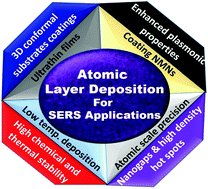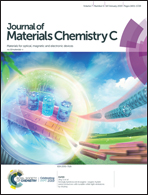Emerging applications of atomic layer deposition for the rational design of novel nanostructures for surface-enhanced Raman scattering
Abstract
Surface-enhanced Raman scattering (SERS) has been recognized as an excellent spectroscopic technique for ultrasensitive and quantitative chemical/biochemical sensing applications. Generally, noble metal nanostructures (NMNs) contribute to the outstanding SERS performance due to their unique surface plasmon resonance properties. Single-molecular SERS detection is possible through engineering of their plasmonic properties. However, due to the lack of stability and reusability of NMNs, the fabrication of SERS active substrates with well-stabilized nanostructures, high sensitivity and reproducible SERS quantification is very challenging but highly desirable. Thus, efforts are being carried out to fabricate SERS substrates with long-term stability, higher sensitivity, and reproducibility in addition to interdisciplinary applications. The nano-architecturing of novel functional materials using the atomic layer deposition (ALD) technique has emerged as an excellent strategy for engineering novel nanostructures and tuning the plasmonic properties of NMNs with atomic-level precision under tunable synthetic conditions. This review reports on the development of novel, highly stable and ultrasensitive SERS substrates fabricated/assisted via ALD and their SERS applications in nanobiotechnology. Also included are the ALD surface chemistry and reaction mechanisms of various functional materials (dielectric metal oxides and plasmonic materials) with special emphasis on the improvement of their physio-chemical and optical properties for SERS applications. In addition, the various ways of utilizing ALD in designing robust and stable SERS substrates are discussed. Finally, the future prospects for ALD-synthesized SERS active substrates is discussed with emphasis on critical issues and real practical applications.

- This article is part of the themed collection: Recent Review Articles


 Please wait while we load your content...
Please wait while we load your content...